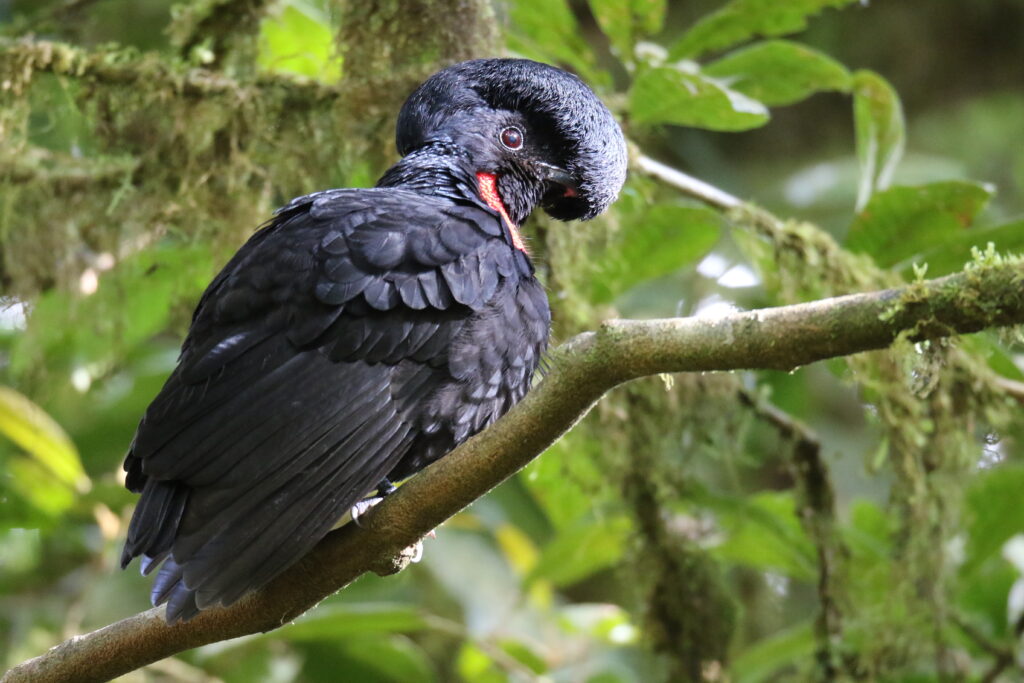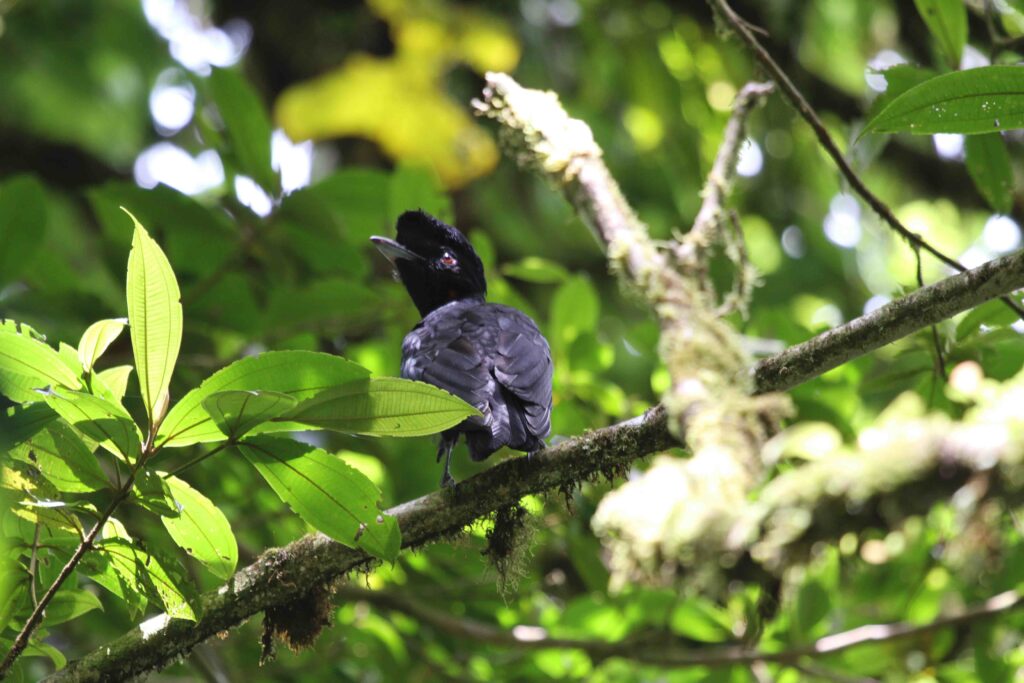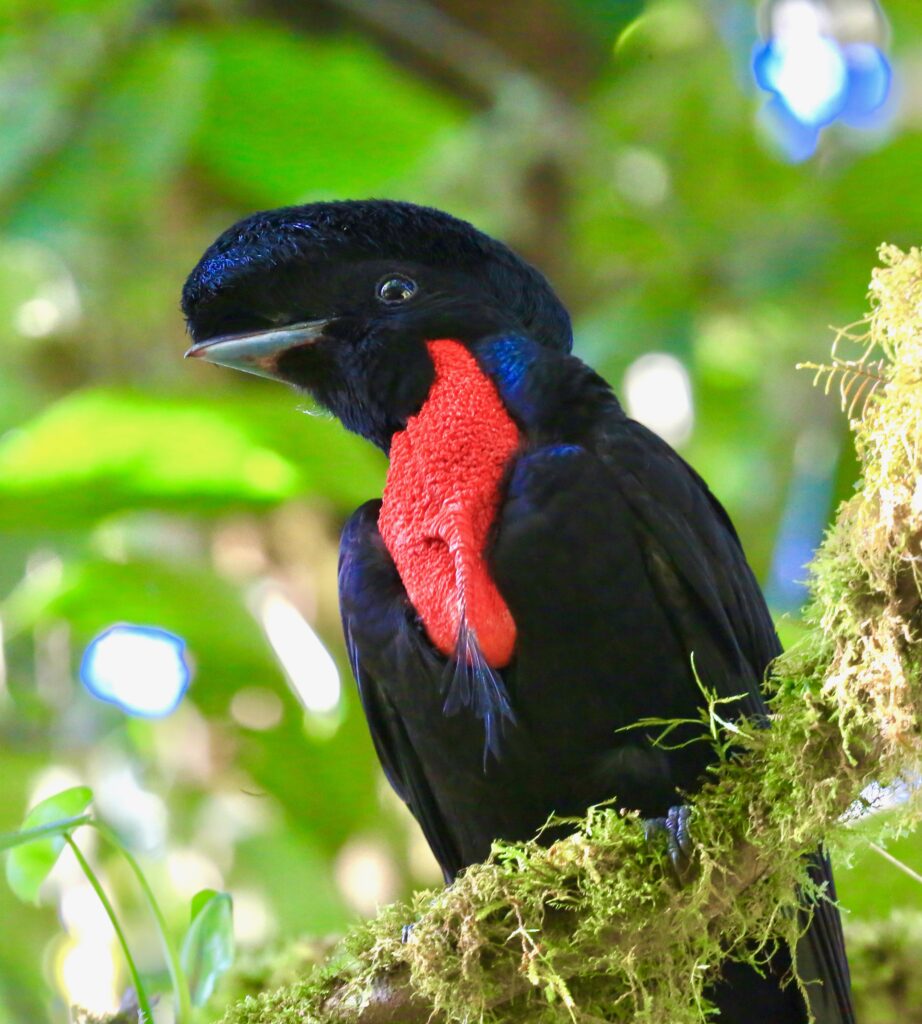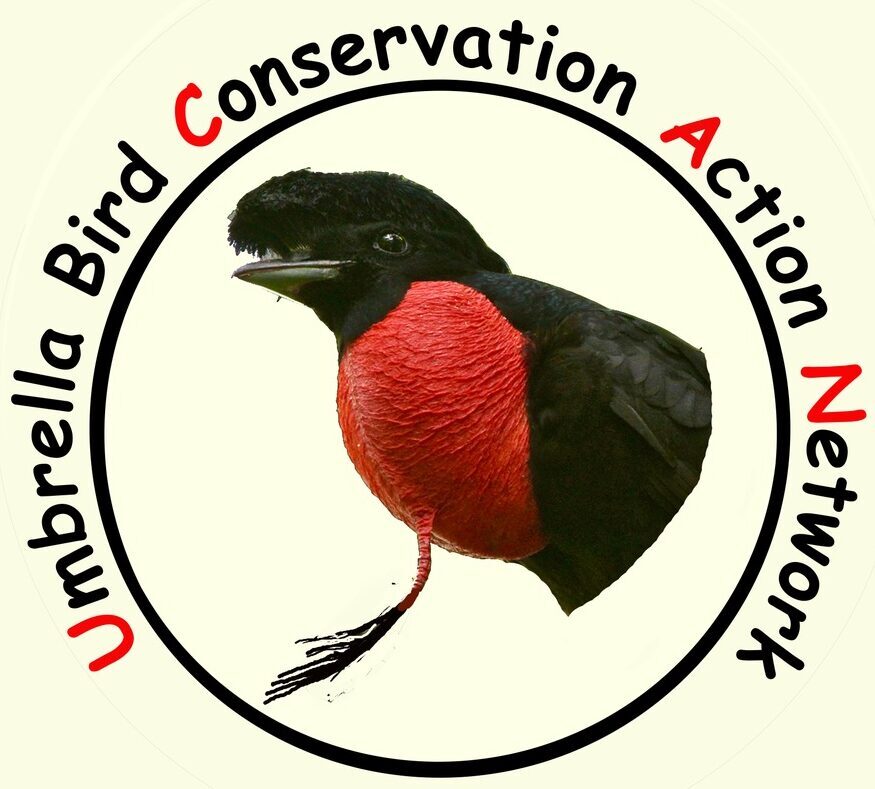Umbrellabird
Conservation
Action
Network
Who is UCAN
UCAN was created and is run entirely by passionate international volunteer researchers, biologists and naturalists. This dedicated team was invited to continue a previously established longterm study being conducted in Costa Rica. UCAN’s efforts in Costa Rica are dedicated to the conservation and protection of Cephalopterus glabricollis (Bare-necked Umbrellabird), a passerine of the Cotingidae family.
This website focusing only on the Bare-necked Umbrellabird (Cephalopterus glabricollis), hoping to bring awareness to its dire need for protection as well as offer an informative site to share with the general public what we have learned to date through our extensive observations and research. Next to nothing has been published or confirmed regarding female nesting and brooding behaviors or chick behavior and development. UCAN volunteers have been fortunate enough to locate both males and females in various stages of feeding, courtship, mating, nesting and raising young. UCAN’s goal is to share knowledge with all those interested through open source updates as new data is collected.
How UCAN came to be
Nearly 20 years ago, a female umbrellabird was observed constructing a nest in a small private reserve located in the Tilaran mountains located in the northern half of Costa Rica. Realizing very little had been previously recorded regarding the female and her nesting and brooding habits, a volunteer research team was created to collect data and document this process to better understand the conservation needs of this secretive and declining species. It is from these first years of awareness from the original land owners that a more focused study began. Knowing the value of such a study, UCAN has focused much of its energy into continuing this data collection.
UCAN staff and volunteers have been conducting an intensive, ongoing behavioral study to better understand the threats and needs of this increasingly rare and charismatic species. This multi-year ethological study using high definition photo, video and audio recordings, combined with the deployment of satellite transmitters, color bands and over 2500 hours of “in the field” observations, has allowed a greater understanding of how best to protect the Bare-necked Umbrellabird for future generations. UCAN’s biggest success has been the recent discovery of several active nesting sites with nearly all of the data collected being new to science.




For over 100 years detailed observations had been made regarding the behaviors of the charismatic male umbrellabird, but to this day little is known about the elusive female. Deeper investigations by UCAN led to discoveries no one had successfully documented before. Hundreds of hours filming and documenting activities like brooding, incubation and rearing of young umbrellabirds to adulthood have now been captured. To our knowledge, only one Bare-necked umbrellabird nest had been described in 1988 (Fogden & Fogden), with the single chick being predated shortly after hatching.
Since the discovery of our first nest, various levels of study and observations of both the males and females began. We have focused all our research efforts into better understanding the conservation needs of Cephalopterus glabricollis. Meticulous observations has enabled UCAN to document and better understand the process of lekking, mating, nest building, feeding and the raising of young umbrellabirds. In the process, we also learned a great deal about how best to study and protect the birds (and feed the millions of mosquitoes that took delight in our presence). Since nearly all the data gathered regarding nesting, brooding and fledging of the young was new to science, we doubled our efforts to document every detail with the desire of sharing this information with others. At UCAN, we firmly believe and support open source data sharing and citizen science initiatives. We encourage anyone who may be interested in research and conservation of endangered species to contact us for more information on how you may help us into bringing the umbrellabirds of Costa Rica back from the edge of extinction.

The web of life in the rain forest is far too complex for us to even fathom. Every time a species goes extinct that web is weakened in profound ways. The Bare-necked umbrellabird is perched precariously close to the edge of forever gone. To protect endangered lands, streams and species takes a massive effort, both physically and monetarily. In order to assist us in our ongoing research and protection of this species, it is our hope that through this website and other platforms, we may enlighten and perhaps stimulate others to support us in protecting this mysterious, handsome and sometimes comical bird before it is too late.


